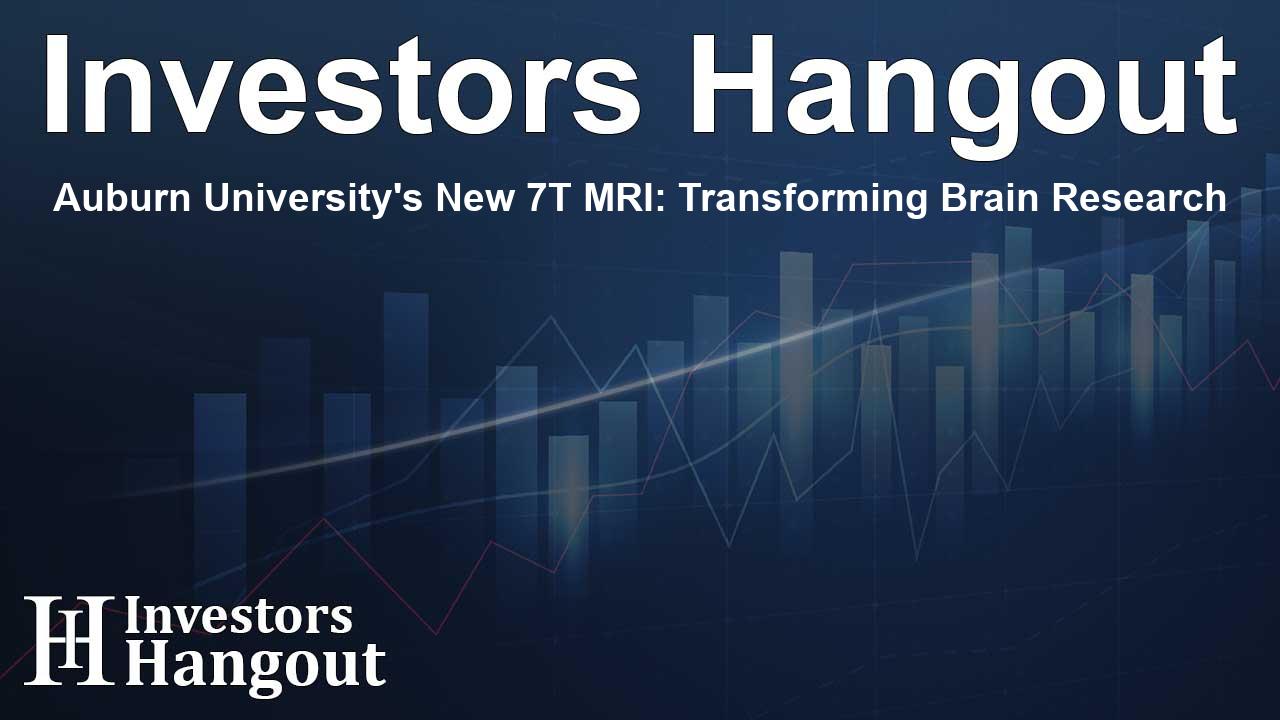Auburn University's New 7T MRI: Transforming Brain Research

Introduction to Auburn University's New 7T MRI
Auburn University has made a significant leap in brain research with the installation of a cutting-edge 7 Tesla (7T) magnetic resonance imaging (MRI) scanner. This state-of-the-art instrument, named Siemens MAGNETOM Terra.X, promises to provide researchers with unprecedented insights into the human brain.
Understanding the Importance of the 7T MRI
With its enhanced capabilities, the new 7T MRI enables scientists to capture high-resolution images of the brain, elevating research possibilities beyond what was previously attainable with standard 3T scanners. This powerful equipment allows for a much more detailed examination of brain activity and structure, crucial for understanding complex neurological conditions and therapeutic developments.
The Experience of Leading Researchers
Gopikrishna Deshpande, a professor specializing in electrical and computer engineering, emphasizes the importance of this technology. He notes that while 3T MRI scanners offered decent visuals, they often lacked the granularity required to uncover intricate details of brain function and connections. With the new 7T system, researchers are poised to gain clearer insights into various neurological phenomena, paving the way for groundbreaking studies.
The Enhanced Features of the 7T MRI
One of the standout features of the Siemens MAGNETOM Terra.X is its parallel transmit technology. Unlike older models that operated with a single beam, this modern scanner transmits multiple beams, providing better illumination of brain regions and uniformity in imaging. This improvement is paramount for detailed sodium imaging, crucial for identifying regional concentrations of sodium ions in the brain, which can have direct implications for understanding various disorders.
Exciting Research Opportunities Ahead
Researchers at Auburn University are enthusiastic about the new avenues of research that will be opened up thanks to the 7T MRI. They plan to investigate a range of subjects, including the impact of psychological disorders like PTSD, the intricate workings of brain connectivity in different populations, and the cellular energy processes relevant to muscle function and neurological health.
Collaborative and Innovative Research Initiatives
Professors and researchers, such as Meredith Reid and Jennifer Robinson, are already conceptualizing studies that leverage the extraordinary capabilities of the new MRI scanner. Their work aims to deepen our understanding of mental health and neurophysiology, effectively contributing to the broader academic and medical communities.
The Vision for Auburn University's Research Future
According to Thomas Denney, director of the Auburn University Neuroimaging Center, the 7T MRI marks a pivotal moment for their research program. Not only does it enhance their current capabilities, but it also asserts Auburn's position as a leader in MRI research nationally. Denney is committed to ensuring that the university's innovative approaches in neuroimaging continually advance.
Building a Thriving Research Community
Since the opening of the Thomas Walter MRI Research Building, Auburn University has significantly expanded its research team and capabilities. The focus on collaboration among departments underscores the university’s strategy of fostering an environment where technology and human skill converge to advance understanding and innovation in medical sciences.
Conclusion: Shaping the Future of Neurological Research
Auburn University is committed to exploring the complexities of the brain through innovative technologies like the 7T MRI. Researchers are optimistic about the endless possibilities this new tool presents, affirming Auburn's dedication to making impactful contributions to health care and scientific knowledge.
Frequently Asked Questions
What is the 7T MRI used for?
The 7T MRI is used for advanced imaging of the brain, providing incredibly detailed images that help researchers study neurological functions and disorders.
How does the new 7T MRI differ from the 3T MRI?
The 7T MRI offers higher resolution images and better uniform coverage due to its multiple transmit channels, which the 3T MRI lacks.
What types of research will be conducted with the new MRI?
Researchers will study various topics, including brain connectivity, PTSD biomarkers, and energy production in brain cells using advanced imaging techniques.
Why is sodium imaging important in brain research?
Sodium imaging helps identify abnormalities in regional sodium concentrations, which can be linked to several neurological conditions.
How does the MRI research at Auburn contribute to healthcare?
The research helps in developing better diagnostic tools and treatments for neurological disorders, ultimately improving healthcare outcomes.
About The Author
Contact Henry Turner privately here. Or send an email with ATTN: Henry Turner as the subject to contact@investorshangout.com.
About Investors Hangout
Investors Hangout is a leading online stock forum for financial discussion and learning, offering a wide range of free tools and resources. It draws in traders of all levels, who exchange market knowledge, investigate trading tactics, and keep an eye on industry developments in real time. Featuring financial articles, stock message boards, quotes, charts, company profiles, and live news updates. Through cooperative learning and a wealth of informational resources, it helps users from novices creating their first portfolios to experts honing their techniques. Join Investors Hangout today: https://investorshangout.com/
The content of this article is based on factual, publicly available information and does not represent legal, financial, or investment advice. Investors Hangout does not offer financial advice, and the author is not a licensed financial advisor. Consult a qualified advisor before making any financial or investment decisions based on this article. This article should not be considered advice to purchase, sell, or hold any securities or other investments. If any of the material provided here is inaccurate, please contact us for corrections.
